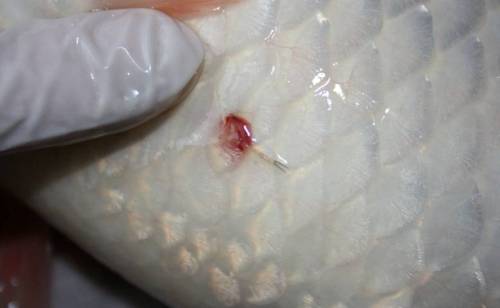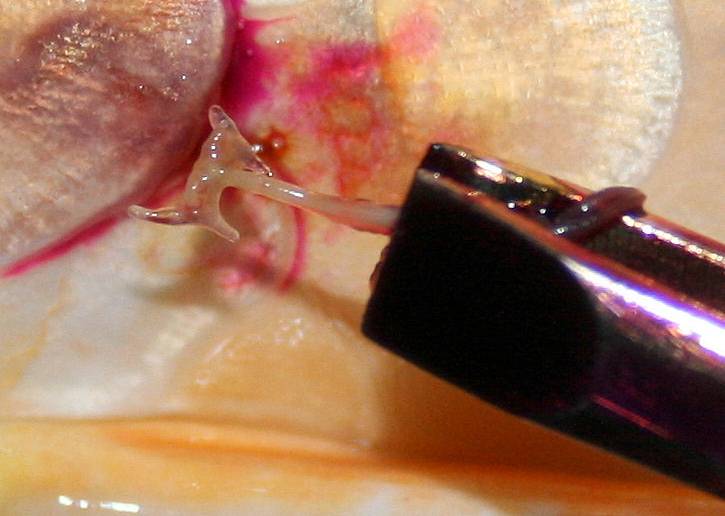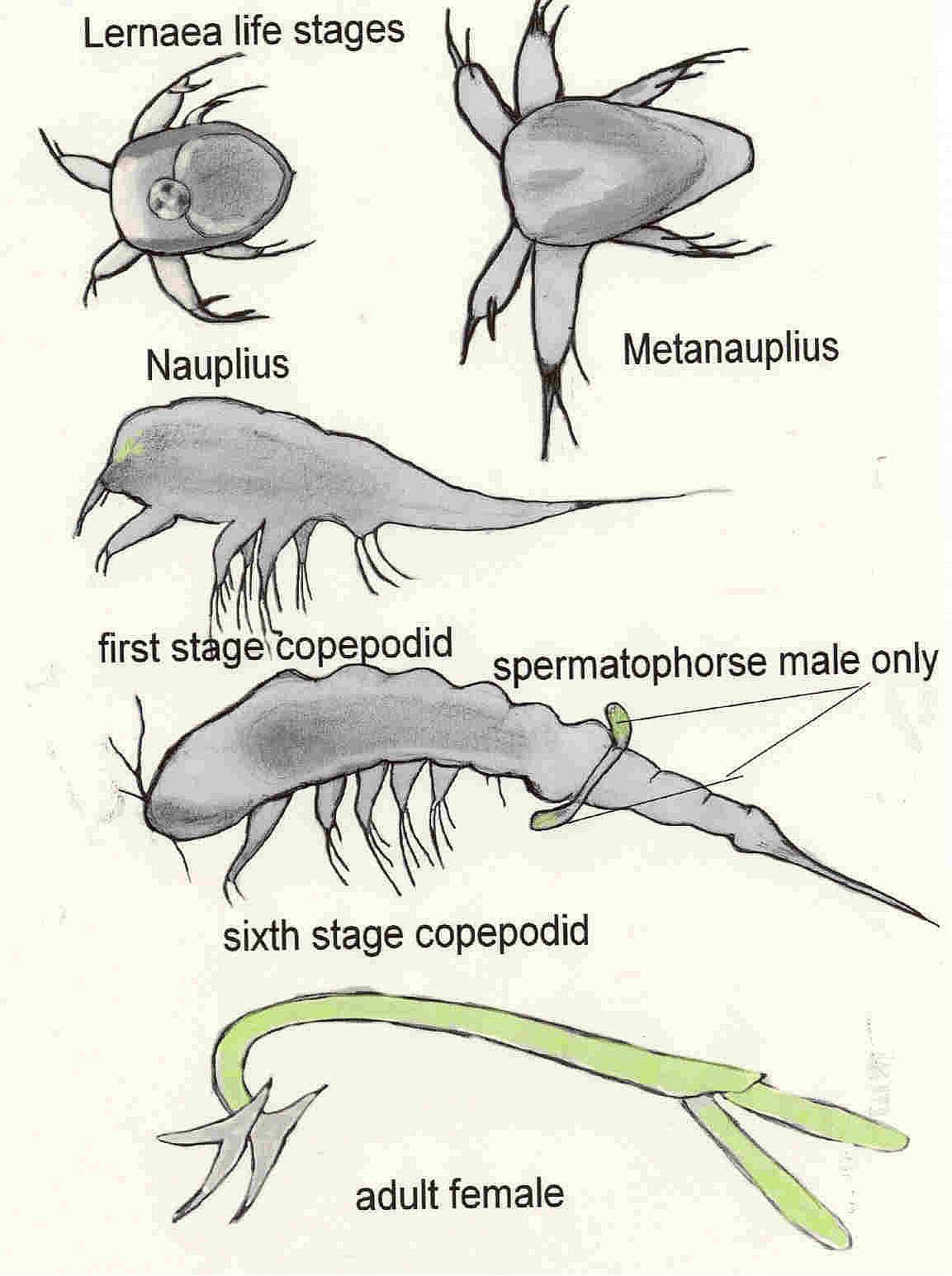DUNCAN GRIFFITHS
2002
The family name Lernaedae belongs to only one genus
Lernaea the anchor worm so called because the head of the parasite develops
into an anchor like projection under the skin of the host to prevent its removal.
The anchor worm is a true parasite, in that it embeds in either the gill or
body of the host and its food source is the tissues of the host, unlike most common parasites that attach to the
fish and feed on any dead matter or bacteria that that happen to pass by.
in this way Lernaea causes immense tissue damage.
Lernaea has an extremely complex and fascinating life cycle worthy of some
study.
Lernaea belongs to a genus class called Copedoda and are crustaceans, related
to lobsters, crabs, it's life cycle is amazingly complex and goes through
many stages of metamorphosis, needing to shed its outer skin to increase in
development and size, starting as a newly emerged hatchling a few microns
in size to an adult measuring up to 8 mm in size.
The easiest gender to deal with from the literary point of view is the male
Lernaea as this never gets beyond the sixth metamorphosis stage. Both genders
reach sexual maturity at the sixth stage and then mating occurs.
The male having developed testes at stage six will deposit two sacks called
spermatophorse on the genitalia of the female and then fall away and
die, his life cycle complete.
In general the metamorphosis stages of both genders are very similar up to
the sixth stage and the death of the male, then the female goes on to embed
into the host. We can see from this, that all Lernaea found embedded on the
host are female and only female.


The cycle begins with the newly emerged hatchling called the Nauplii,( pronounced
"no-pLE-eye") which is oval in shape measuring about 150 micron in length,
after 2/3 days this stage will moult and morph into the next stage the metanauplii,
which is a little larger, as with the Nauplii it has an exoskeleton made of
substance called chitin (pronounced as "kI-tn").
The first thoracic stage will be seen about 2 days after the metanauplii is
created, shortly after this the first copepod
The females continues to develop, growing in length and will then thrust her
head into the living flesh of the host. Once embed into the host the head
starts to develop projections called, cephalic horns, making removal of the
Lernaea very hard. The eggs sacks move rearward to the end of the body resembling
legs. Interestingly, the females have no further use of legs so these will
shrink and eventually vanish leaving a slender body form with the egg sacks
at the rear of the parasite in a classic upside down Y or wine glass shape.
Lernaea will now be completely immobile.Once the eggs are mature they will
be shed into the water and the life cycle begins again
Treatment
Treatment is very hard, as it will involve the capture of the host (koi) and
the physical removal of the parasite with tweezers, taking care not leave
the embodied head of the Lernaea in the flesh of the koi, as this will lead
to secondary bacterial infection which can sometimes be life threatening.
It has been reported that dabbing the parasite with potassium permanganate
will cause the parasite to release her grasp on the host, enabling easy removal,
personally I have never tried this but it is thought extremely unlikely, as
Lernaea have no voluntary control over the head projections. Once the head
and body is removed treat the site with Mercurochrome, betadine or similar
then treatment can begin on the pond.
Masoten @ 1gm per 87 imperial gallons per week for four weeks at a pond temperature
of 65F/18.3C should get all life stages. below 65 deg 6/8 gm per 1000 imperial
gallons
Lernaea will die in a 1.8% salt solution for 20 mins. Lernaea die when not
immersed in water and become dehydrated, so whilst moving the fish to a quarantine
system for salt dips and drain the pond to allow for
cleaning and drying out for 24 hours if you have trouble getting hold of Masoten
The life cycle of Lernaea cannot be completed at temperatures below 15 c and
below 8 c metamorphism cannot take place and lava and adult will die over
winter.
